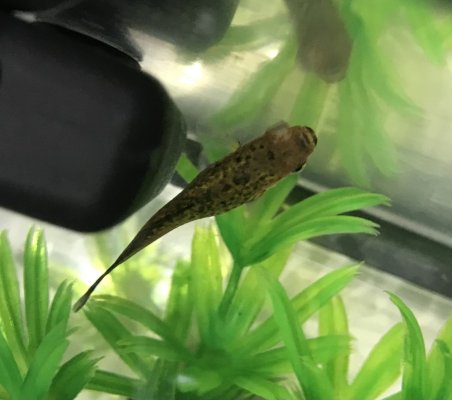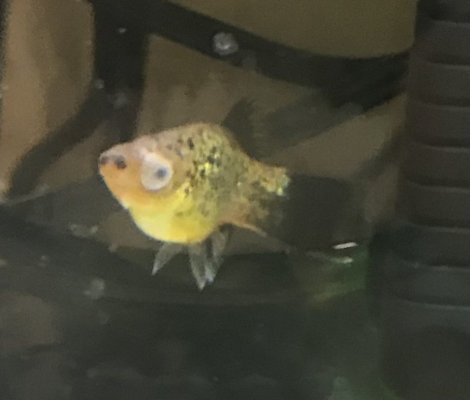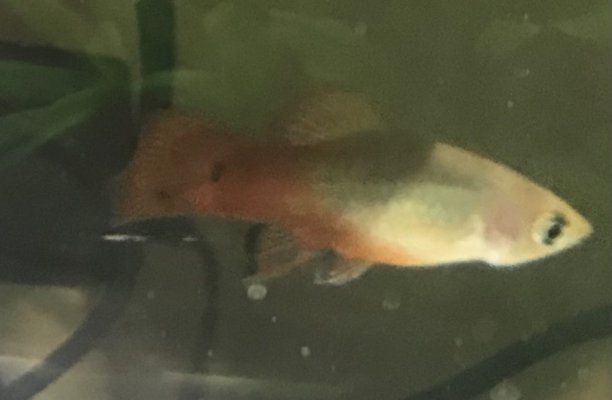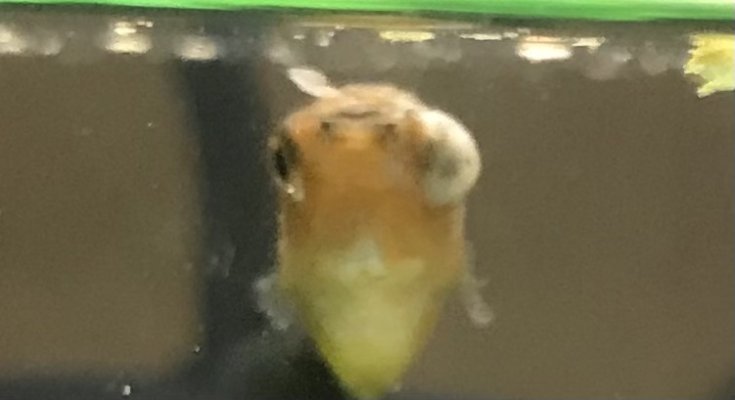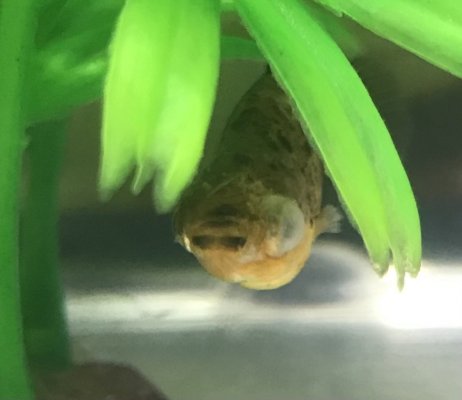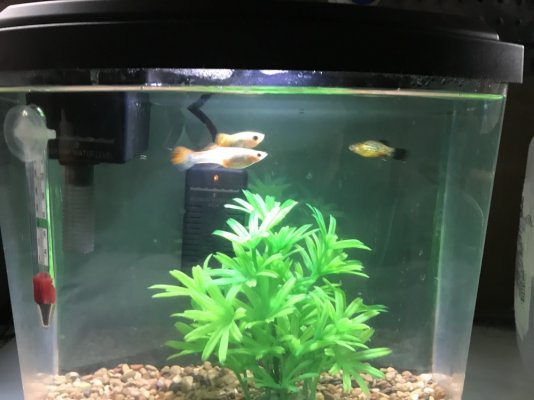You can put a picture on the back of the hospital tank to make the fish feel more secure. You can buy aquarium backings at any pet shop or online. You can also use coloured card, a plastic bin liner or even a sheet of newspaper. Just tape it to the outside of the tank.
Hospital tanks should have a thin layer of gravel or sand to stop the fish seeing their reflection on the bottom. You just need enough to cover the base with a thin (1/4 inch) layer of dark coloured substrate.
--------------------
I can't tell much from the videos.
The picture showing the fish that is pale on the front half of the body can be from stress or a bacterial infection. However, bacteria normally stop the fish from eating and the fish dies within a few days of showing the discolouration.
Salt should have killed off anything minor that was on their bodies so I doubt it's bacterial. Monitor the platy and see if it gets worse over the next few days. Post more pictures if it does.
--------------------
If the fish start rubbing again in a few days, it is either white spot or velvet and you should be able to get a medication that contains Malachite Green or copper. Both of these chemicals will kill any external protozoan infections. However, monitor and wait and see before getting medications or using them.
If they stop rubbing in a few days and it doesn't start again, you won't need to treat them for external protozoan parasites.
--------------------
Salt and low heat won't do anything to internal health issues like stringy white poop. That is usually caused by intestinal worms.
Intestinal Worms like tapeworm and threadworms cause the fish to lose weight, continue eating and swimming normally, and do a stringy white poop. Fish can do this for months and not be too badly affected. In some cases, fish with a bad worm infestation will actually gain weight and get fat and look like a pregnant guppy. This is due to the huge number of worms inside the fish.
Livebearers like guppies, mollies, swordtails & platies are regularly infected with gill flukes and intestinal worms. If the fish are still eating well, then worms is the most likely cause.
You can use Praziquantel to treat tapeworm and gill flukes. And use Levamisole to treat thread/ round worms. If you can't find these medications, look for Flubendazole, which treats both lots of worms.
In the UK look for:
eSHa gdex contains praziquantel that treats tapeworm and gill flukes.
eSHa-ndx contains levamisole and treats thread/ round worms.
NT Labs Anti-fluke and Wormer contains flubendazole.
Kusuri wormer plus (contains flubendazole) - sold mainly for discus, comes as a powder which is quite hard to dose in smaller tanks
Sera nematol (contains emamectin)
Remove carbon from filters before treatment and increase aeration/ surface turbulence to maximise oxygen levels in the water.
You treat the fish once a week for 4 weeks. The first treatment will kill any worms in the fish. The second, third and forth treatments kill any baby worms that hatch from eggs inside the fish's digestive tract.
Treat every fish tank in the house at the same time to prevent cross contamination.
You do a 75% water change and complete gravel clean 24-48 hours after treatment. Clean the filter 24 hours after treatment too.
Do not use the 2 medications together. If you want to treat both medications in a short space of time, use Praziquantel on day one. Do a 75% water change and gravel clean the substrate on day 2 & 3. Treat the tank with Levamisole on day 4 and do a 75% water change and gravel clean on day 5, 6 & 7 and then start with Praziquantel again on day 8.
The water changes will remove most of the medication so you don't overdose the fish the next time you treat them. The gravel cleaning will suck out any worms and eggs that have been expelled by the fish. Repeating the treatment for 3-4 doses at weekly intervals will kill any worms that hatch from eggs. At the end of the treatment you will have healthier fish.



